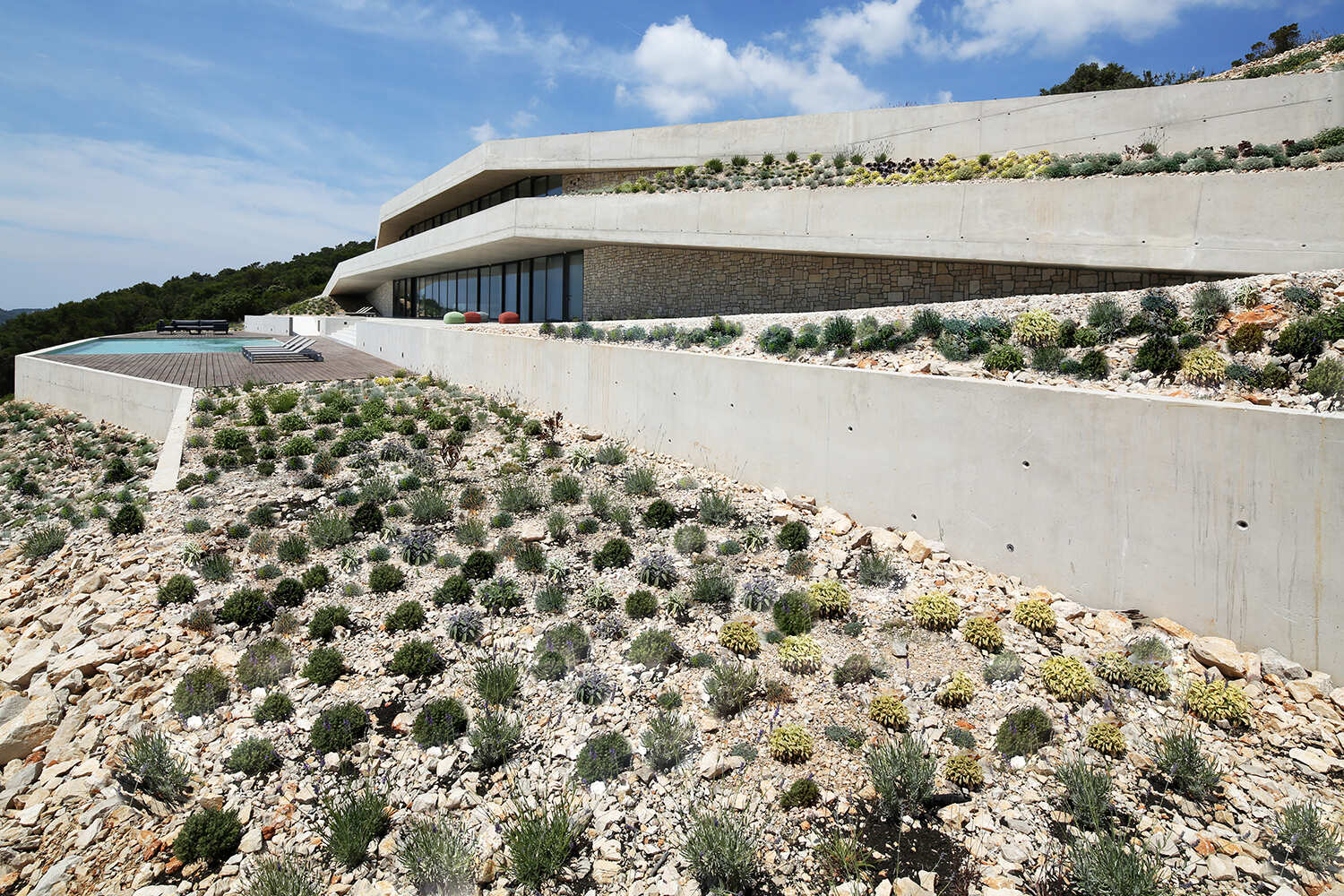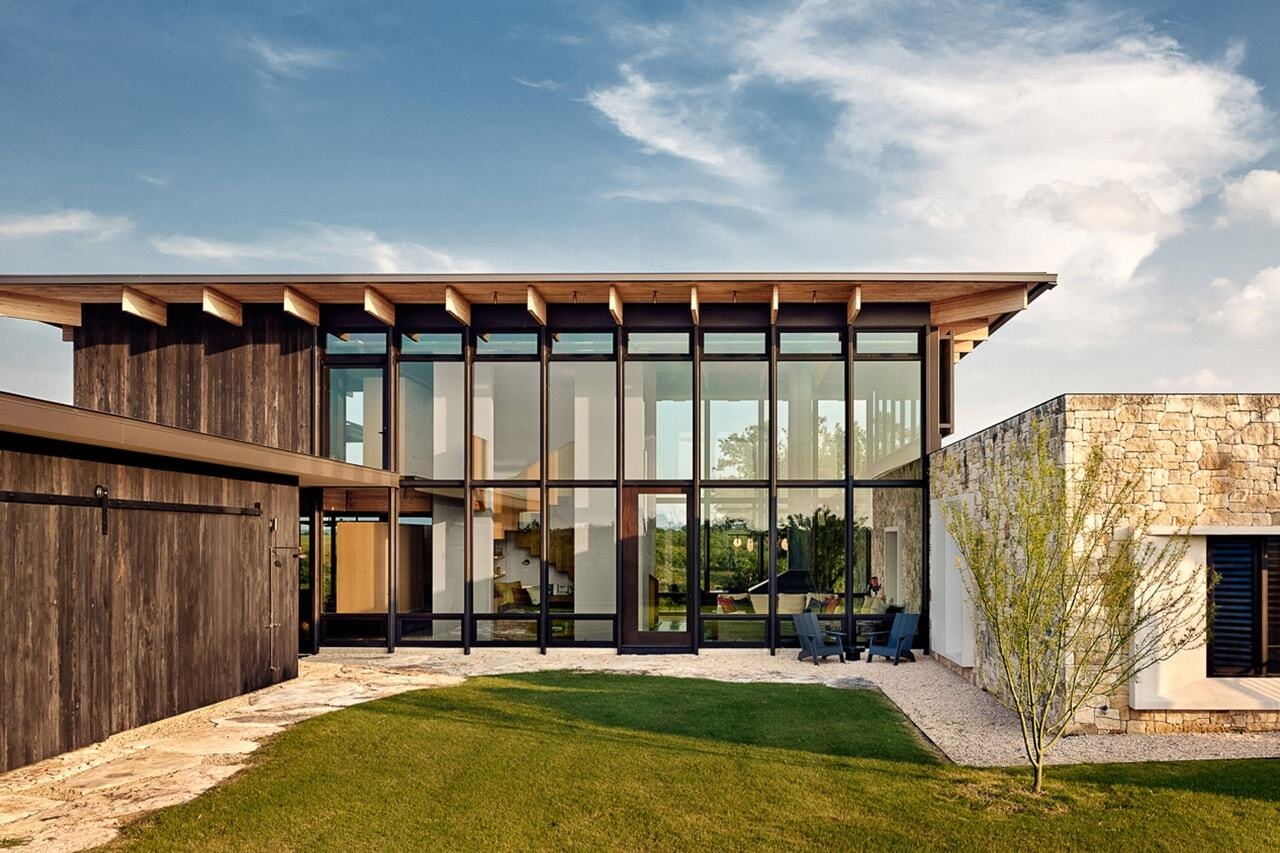BLDUS creates alley house in Washington DC with cork cladding


Architectural studio BLDUS has created a slender home in an urban alleyway called Brown House, which features a rooftop farm and the use of "healthy" building materials such as cork, bamboo and hemp.
Encompassing 1,600 square feet (149 square metres), the single-family house is located along the newly named Overbeck Alley in Capitol Hill, a historic neighbourhood in Washington DC.

Changes to zoning regulations in 2016 have fostered the development of alley houses in America's capital city, which is facing a housing shortage.
"The house contributes to a broader mission in DC to add residential density wherever possible as a means to alleviate the housing crisis," said local studio BLDUS.

The architects said that alley houses of all styles can enhance the areas in which they are located, as alleys are often forlorn spaces.
"Neglected vacant alley lots are attractors of litter, rot and crime, so even totally conventional alley houses can improve the conditions of an alley for the inhabitants of the block," the team said.

The Brown House was built on a vacant, free-standing sliver of land that measures 18 by 68 feet (5.5 by 21 metres). It was designed for a couple with a Mastiff dog.
Rectangular in plan and form, the slender building rises two levels and has operable square windows and wooden screens.

Balancing privacy and natural light was a key priority for the designers.
The ground level holds a room for for cooking, dining and lounging on one side, and a bedroom and bathroom on the other.

A central, skylit staircase leads to the upper level, where one finds two additional bedrooms and two bathrooms.
The layout is meant to foster "efficient" living and enable occupants to stay in the house long-term.

"Life could be lived entirely on the ground floor if necessary," said the architects.
The team used a "healthy material palette" to create the house, with an emphasis on local availability.

"Materials were sourced as locally as possible and with as light a carbon footprint as possible," the team said.
Facades are clad in cork, which is overlaid with protective slats made of black locust – a type of wood known for its durability. The same type of slats were used to screen-in balconies and create fencing and railings.

The structural walls are made of bamboo. Cellulose and hemp insulation were used to fill cavities in the walls and unvented roof.
Interior finishes include a spray-cork finish on plywood walls, which echoes the cork used on the exterior.

Bamboo structural panels were left exposed and stained with a material called PolyWhey, which is a byproduct of the cheese industry.
Copper was used for rain gutters and rain chains, the latter being a device that directs water from the roof to the ground level.

The materials were meant to give the building character and "facilitate healthy lifestyles".
"Spaces made from healthy materials that are natural, straightforward and recognisable allow people to relate to them at a visceral level more than anonymous painted-drywall spaces, endearing them to their users over time," the studio said.

Despite the site's compact conditions, the team was able to incorporate spaces for spending time outdoors.
These include a fenced-in garden and terrace on the ground level, two screened-in balconies on the upper level, and the rooftop urban farm.

"Rooftop planter beds allow the inhabitants of Brown House to grow the majority of their diet during some periods of the year and supplement them during others," the team said.
"These beds utilise rainfall in the most direct way possible, feeding the plants growing in the beds."
Rainwater that falls on the roof is channelled to the metal rain chains, which run down two sides of the house.
One directs water to the ground-level garden, while the other connects to a cistern. The stored water is used to irrigate plantings.

The architects said the home has attracted birds, which they see as an indication of the building's healthful quality.
"Two different bird nests have already been made in the enclosed exterior spaces of the house during its first spring, a sign of recognition by the birds of the health and safety afforded by the house," the team said.
Other alley houses include a dwelling in Toronto by Williamson Williamson that has a front facade made of rotated bricks, and a compact residence in Seattle that is partly lifted off the ground to make way for parking.
The photography is by Ty Cole.
The post BLDUS creates alley house in Washington DC with cork cladding appeared first on Dezeen.




















































